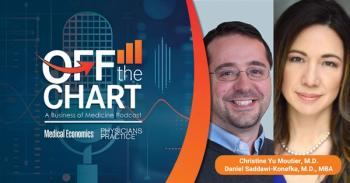
Supporting Staff During COVID-19: HR Tips and Strategies
HR professionals who manage physicians’ practices—if they haven’t already—must reshape the workplace each and every day.
Whether physicians’ offices remained open, scaled back, reopened in phases, shifted to hybrid in-office/telehealth models, or are still in the process of reopening in response to COVID-19, one thing is certain: nearly everything about running a medical practice has changed and will continue to evolve as the pandemic plays out.
In my work amidst COVID-19 as Chief Human Resources Officer, I’ve seen that HR professionals who manage physicians’ practices—if they haven’t already—must reshape the workplace each and every day. They can do this by focusing intently on employees by:
- Investing in people and the benefits/perks that support them and keep them safe
- Focusing on talent retention and acquisition with new eyes
- Embracing flexibility by acknowledging that practices will not return any time soon to a pre-pandemic normal
Your workplace approach must be informed by feedback, strengthened by ongoing communications, and crafted to support the safety, health, productivity, and concerns of employees and patients alike, so that vital healthcare can continue to be delivered.
Implement an updated approach to practice management guided by these three tips:
1. Identify What Employees Need and Provide It
Ask your staff which benefits and policies will support them as satisfied healthcare professionals, individuals, and family members. Do they need additional paid time off (PTO) or sick leave? More generous rollover PTO policies, childcare/eldercare assistance, or extended leaves of absences, especially for those who become ill/quarantined or have other family responsibilities at home? Benefits that enable employees to recover and/or care for their loved ones demonstrate their value to the practice and provide reassurance that their job is not at risk.
What about employees who have additional worries about their own health and safety? New healthcare perks, such as free telehealth visits, practice-provided flu vaccines or other services, and expanded emotional/mental health counseling services can address employee stress and anxiety.
Consider protecting the workplace by designating an infection-control manager for each setting. Doing so will reassure staff that someone is regularly monitoring their health, their colleagues’ health, and the safety of the workplace in accordance with current healthcare guidelines and standards.
2: A Revitalized Approach to HR and Talent Acquisition
How can practices recruit, interview, hire, and train employees in this new environment? View the activities from the candidate’s/employee’s perspective, and then pivot traditional activities to meet their needs.
Video platforms can replace face-to-face encounters for such activities as job fairs, screening interviews, onboarding activities, and new-employee training. Doing so reassures candidates of your commitment to safety while still providing helpful tools to support their success.
Current employees can benefit from additional training to help them face new challenges, technologies, care protocols, safety guidelines, and entire new routines for once-familiar activities and encounters.
Re-think the office/clinic layout and activities. Does everyone have to remain in the office, clinic, lab, or care setting? Is work-at-home a possibility for some employees? Is job-sharing an option for employees who want to continue working but on a limited schedule because of family responsibilities? How can offices and settings be re-configured or altered to accommodate physical barriers, social distancing, less congested traffic patterns, and employee safety?
Creativity and flexibility can relieve employees’ ongoing and emerging concerns.
3. Remaining Nimble Is Key to Long-term Success
This pandemic has manifested itself as a global wake-up call with simultaneously broad and local impacts—one nation, state, community, healthcare system, hospital, and physicians’ office at a time. No doubt COVID-19-related change will continue with both predictability and elements of surprise.
HR professionals who manage physicians’ offices must be ready and willing to both lead through and react to change based on COVID-19's presence in respective communities, patients’ perceptions, and employees’ needs.
Some staff members may leave, while others are likely to re-commit to a satisfying-though-challenging healthcare career. Current employees will require ongoing communication and tangible policies that reassure them of the permanence of their job. Candidates will expect affirmation that their career choice is both safe and viable. Patients will need visible signs of safety guided by unseen-but-sizeable behind-the-scenes work policies and strategies that reduce health risks.
Some HR paths into 2021 are already clear. Others, like HR’s responses and solutions, must remain fluid. COVID-19 in 2020 refocused HR professionals’ core mission to where it matters most: on employees, helping them to carry out their jobs effectively, pursue their passion for healthcare, and provide patient care that is safe, successful, and trusted.
About the Author
Diane Psaras is chief human resources (HR) officer for
Newsletter
Optimize your practice with the Physicians Practice newsletter, offering management pearls, leadership tips, and business strategies tailored for practice administrators and physicians of any specialty.










